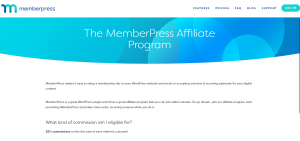
For those of you who haven’t entered the world of Facebook advertising, there’s a lot of daunting vocabulary. Understanding what all these terms mean may not guarantee a perfect advertising campaign, but it will help you set up your ads properly and make better sense of the results.
Campaign vs. Ad Set vs. Ad
These three terms are all categories. It makes the most sense to work from the bottom up.
An ad is the actual advertisement people will see on Facebook. Here is where you actually design the ad (including the copy, headline, and image).
Ads are categorized into ad sets. An ad set is a combination of all the ads that target one particular niche. For example, you could have an ad set named “Women Basketball” that targeted women 17-24 in Vancouver that enjoyed basketball. All the ads inside that ad set would be shown to your target audience.
Ad sets also determine the budget and duration of your ads. If you had $ 150.00 budgeted in your Women’s basketball ad set, Facebook would automatically test all the ads to see which ones perform the best. Those that perform well, receive a bigger slice of your advertising budget.
Note that regardless of how well your ads do, you will never go over your maximum ad set budget.
A campaign groups different ad sets together. If we build on our example with women’s basketball, a campaign would be called “Nike Promotion”, with ad sets like “Women’s Basketball”, “Men’s Football”, and “Children Runners”. Note that each of these ad sets will have completely different budgets, schedules, and audiences.
Reach vs. Impressions vs. Frequency
An impression is when an ad shows up in front of someone. You don’t have to actually click it. Heck, you don’t have to actually see it! It just has to load on your page for it to be counted as an impression.
Reach is like an impression, but more specific. Reach counts unique impressions, so no matter how many times you saw an ad, it is only counted as one reach. Be careful with marketers and agencies boasting high impressions. Reach is a much more impactful metric.
Frequency is the average number of times your ad was shown to your audience. The higher the frequency, the more likely someone will notice (and click) your ad.
Here’s a handy guide to understanding what your impressions, reach, and frequency numbers are telling you.
If you have…
High impressions, low reach, and high frequency:
Your have a small target audience. You’re hitting your audience hard and repeatedly, which is great, but you may want to broaden your scope.
Low impressions, high reach, and low frequency:
You’re reaching a high number of people, but they’re only seeing your ad once or twice. This may not be enough to compel them to take action. Consider narrowing your scope.
CPM vs CPC
CPM stands for cost per 1,000 (M in this case is the Roman numeral for a thousand), whereas CPC stands for cost per click. When you advertise through Facebook, one of the common ways to monitor its effectiveness is by looking at the CPM or CPC.
Cost per 1,000 is the total budget divided by the total impressions divided by 1,000. If you had $ 150.00 and your ad received 70,000 impressions, your CPM would be $ 2.14. This metric is good for evaluating how effective your ads were at building brand awareness. Note that CPM only measures by impressions, not by reach!
Cost per click is the total budget divided by the total number of clicks on your ad. If you had $ 150.00 and you had 700 clicks, your average cost per click was $ 0.21. Cost per click is great for measuring how compelling your ad is as a whole.
Digital & Social Articles on Business 2 Community(68)
Report Post






